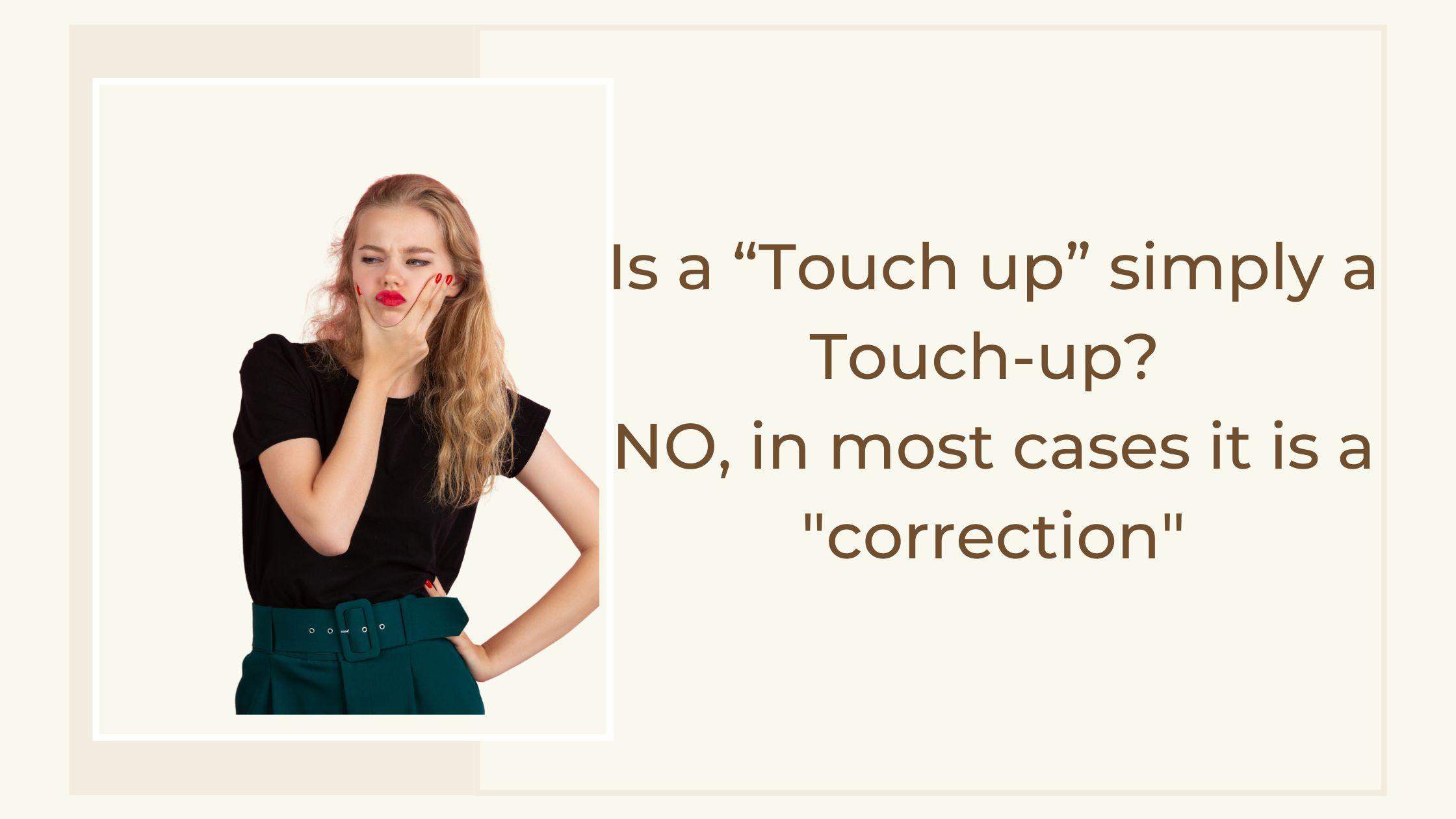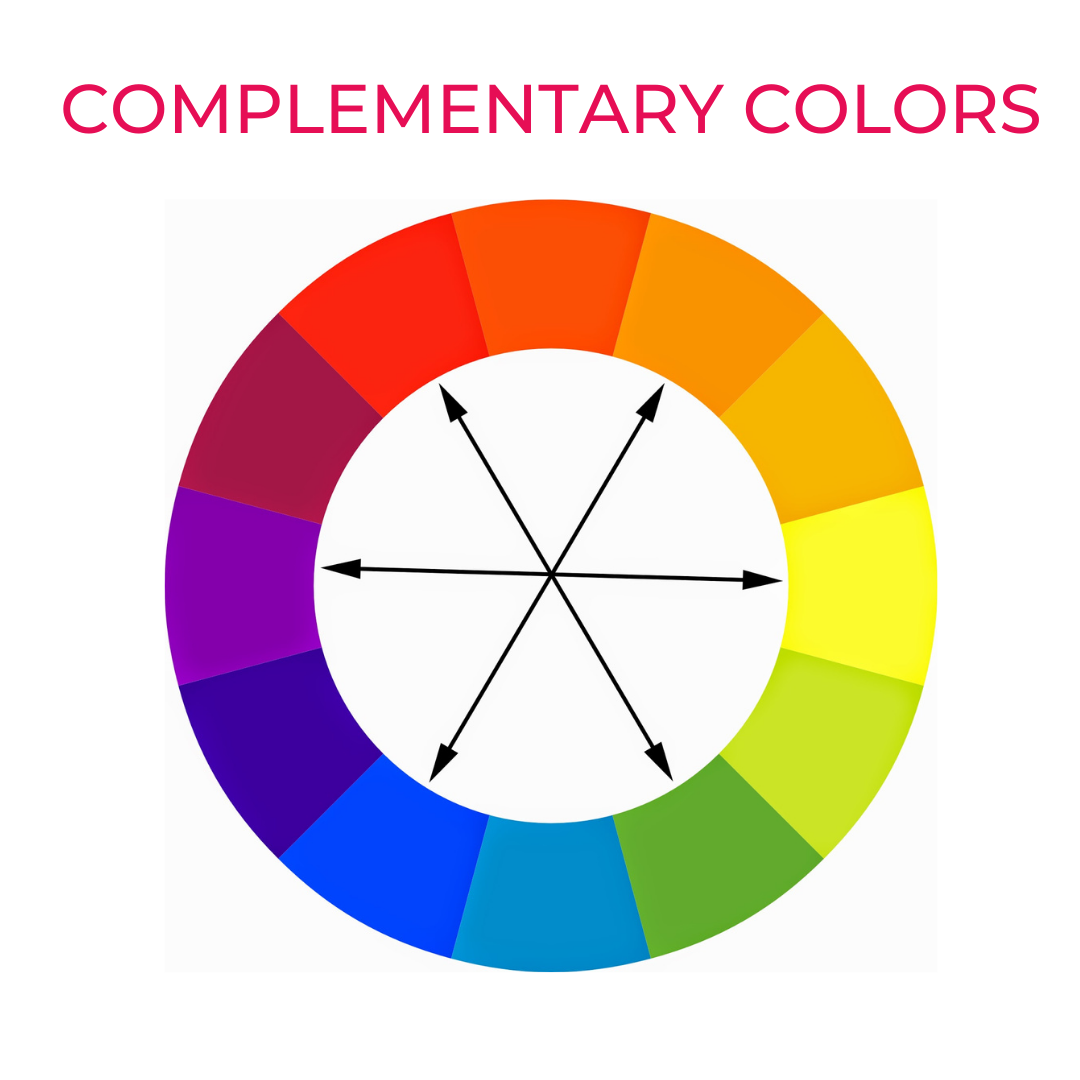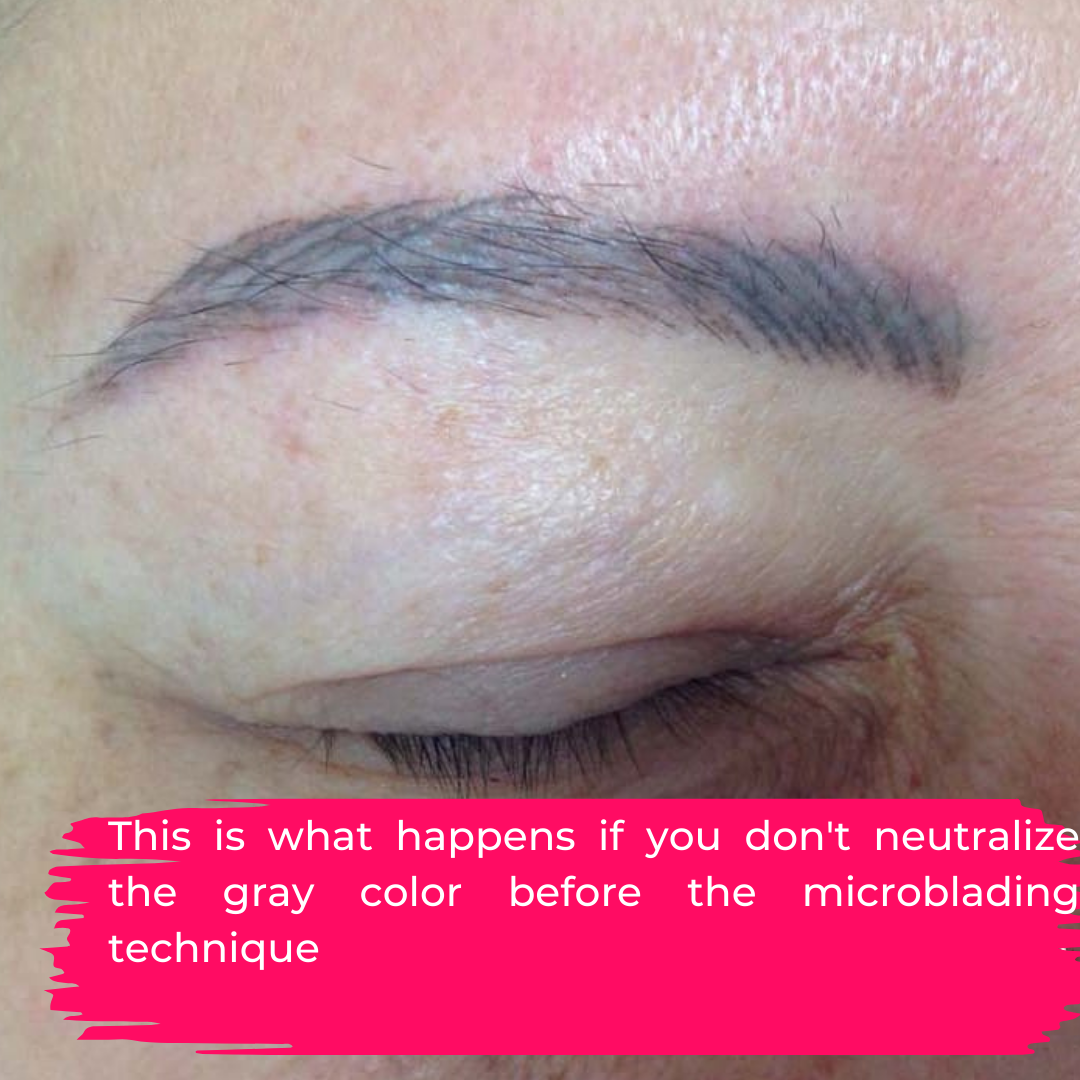In my Permanent Makeup practice, some of the most common appointments scheduled are for touch-ups from clients who got their eyebrows done years ago with another person. When the client calls to make the appointment, they usually say “It's almost nothing, it is just a retouch” but in many cases, it is not just that.
A touch-up is a simple procedure when the color is faded but maintains the tone and the shape requires no modification. In those cases, you may apply the brown color directly.
Since color changes over time as a natural process, for me, most of the time a retouch means "a correction”. During the consultation, it is important to establish that if you are doing a touch up you can not be 100% responsible for the final result, because you are working on a pre-existing basis.
When you see that your client arrives with reddish, bluish, grayish, or violet eyebrows you can not simply apply brown color on top. If you do it, the color that she had, will appear again. For this reason, you must neutralize it before applying the desired brown color. Of course, there are more complicated cases where you need to modify the shape as well, but this is another topic of conversation.
In permanent makeup, when you mix two complementary colors, the result is brown. However, when you implant one pigment on top of its complementary, it will turn neutral brown.
Considering these characteristics, the Softap Color palette includes the Correction Aid Colors.
Green: Lime-Aid- It is best for neutralizing red or orange tones.
Orange: Orange-Aid- This is best for neutralizing a blue or gray color.
Yellow: Lemon-Aid helps when your client has multiple colors in her eyebrows.
TIPS
If the color was reddish, after applying the Lime Aid, you should use a neutral or light cold tone, while if it was bluish or grayish, you should apply a warm tone after the Orange Aid, the same as if the color was purple.
If the color is light, you can do both the neutralization and the application of the brown color in the same session.
You must wait 3-4 weeks between sessions.
I need to emphasize that the technique that should be used for neutralizing colors is shading or micro shading using the Softap Needles, not microblading.
If your client needs to modify the form, that is a subject of correction for an expert; if you are one of those, go ahead!
If you DO NOT have that knowledge, I recommend that you NOT commit to doing the work because If you don't get a good result, you will end up doing several free sessions, and it will be a negative review for you.
Refrain from trying to correct and do the actual procedure in one session because the result may be a disaster.
If your client has a solid or a shadow effect in her eyebrows and wants to change to individual hair strokes with the microblading technique, you must set the expectations very well. In that case, you need to explain to her that it is possible that you need to do several sessions before you achieve the effect she wants.
If you don't correct the previous color, that color stands out, generating an effect that doesn’t look natural like you see in the picture.
Next time you receive a call from one of your clients asking for a touch-up, remember two things:
First, do not give a price before a personal evaluation.
Think that you have to do more than you imagined
I hope you will take this into consideration.
Talk soon,
Dr. Sandra Piedad Cardona
Email: Info@BuyPermanentMakeup.com - Phone: +1(510) 423-3014
PS: I created BuyPermanentMakeup.com to ensure my students and the permanent makeup professional community had the best experience, products, and service, along with ongoing education and content.
What people are saying about us...








